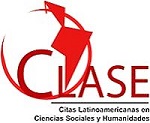Occupational Health and Safety Management Systems (SG-SST). Diagnosis in the construction sector of Manizales.
DOI:
https://doi.org/10.33571/teuken.v9n13a6Keywords:
occupational safety and health, industrial safety, management systems, occupational health and safety management systemsAbstract
The present article presents the results of a study whose general objective was to establish the degree of accomplishment in the implementation of the Occupational Health and Safety Management System (OHS-MS) in its Occupational Safety component of enterprises in the construction sector of the city of Manizales (Colombia). The method was analytical and its scope was descriptive. The instrument used was designed based on international standards and national decrees. The results indicate that in the construction sector in the city of Manizales, small enterprises predominate in which their OHS-MS are inmature and that the phases of the PHVA cycle are partially fulfilled. It is concluded that these enterprises should articulate the phases of the PHVA cycle in order to be able to successfully implement OHS-MS.Article Metrics
Abstract: 5542 PDF (Español (España)): 2719PlumX metrics
References
ARIAS, Walter. (2011). Uso y desuso de los equipos de protección personal en trabajadores de construcción. En: Ciencia y Trabajo, N° 40. Santiago de Chile: Fundación Científica y Tecnológica ACHS.
ARNTZ-GRAY, Jules. (2016). Plan, Do, Check, Act: The need for independent audit of the internal responsibility system in occupational health and safety. En: Safety Science, Vol. 84. Ámsterdam: Elsevier BV.
AROCENA, Pablo, y NÚÑEZ, Imanol. (2010). An empirical analysis of the effectiveness of occupational health and safety management systems in SMEs. En: International Small Business Journal, Vol. 28 N° 4. Thousand Oaks: Sage
BARBEAU, Elizabeth, ROELOFS, Cora, YOUNGSTROM, Richard, SORENSEN, Glorian, STODDARD, Anne, y LAMONTAGNE, Anthony. (2004). Assessment of occupational safety and health programs in small businesses. En: American Journal of industrial medicine, Vol. 45 N° 4. New Jersey: Wiley-Blackwell.
BATTAGLIA, Massimo; PASSETTI, Emilio; FREY, Marco. (2015). Occupational health and safety management in municipal waste companies: A note on the Italian sector. En: Safety science, Vol. 72. Ámsterdam: Elsevier BV.
CALDERÓN, Gregorio. (2005). Aprender a investigar investigando. Manizales: Zapata.
CARRILLO-CASTRILLO, Jesús A.; TRILLO-CABELLO, Antonio F.; RUBIO-ROMERO, Juan C. (2016). Construction accidents: identification of the main associations between causes, mechanisms and stages of the construction process. En: International journal of occupational safety and ergonomics, Vol. 23 N° 2. Abingdon: Taylor & Francis Group.
CASTILLO-ROSA, Juan, et al. (2017). Personal factors and consequences of electrical occupational accidents in the primary, secondary and tertiary sectors. En: Safety science, Vol. 91. Ámsterdam: Elsevier BV.
COLOMBIA. Ministerio de Trabajo. Decreto 1072. Bogotá, 25 de mayo de 2015.
COLOMBIA. Ministerio de Trabajo. Decreto 1607. Bogotá, 31 de Julio de 2002.
COLOMBIA. Ministerio de Trabajo. Ley 590. Bogotá, 10 de julio de 2000.
COLOMBIA. Ministerio de Trabajo. Resolución 1111. Bogotá, 27 de marzo de 2017.
COLOMBIA. Ministerio de Trabajo. Resolución 1401. Bogotá, 14 de mayo de 2007.
COLOMBIA. Ministerio de Trabajo. Resolución 1409. Bogotá, 23 de julio 2012.
COLOMBIA. Ministerio de Trabajo. Resolución 2400. Bogotá, 22 de mayo de 1979.
COLOMBIA. Ministerio del Trabajo y Seguridad Social. (2014). Construcción, sector de mayor accidentalidad y muertes en 2014 Disponible en internet: http://www.mintrabajo.gov.co/noviembre/4025-construccion-sector-de-mayor-accidentalidad-ymuertes-en-2014.html Consultado 26.12.2016
DE ARRUDA, Agnaldo, y GONTIJO, Leila. (2012). Application of ergonomics principles in underground mines through the Occupational Safety and Health Management System–OSHMS OHSAS 18.001: 2007. En: Work, 41(Supplement 1). Boston: Boston University.
ELKE, Gabriele y ZIMOLONG, Bernhard. (2005). Eine Interventionsstudie zum Einfluss des Human Resource Managements im betrieblichen Arbeits-und Gesundheitsschutz. Zeitschrift für Arbeits-und Organisationspsychologie. En: A&O, Vol. 49 N° 3. Göttingen: Hogrefe Verlag GmbH & Co.
FERNÁNDEZ, Beatriz, MONTES, José, y VÁZQUEZ, Camilo. (2007). Safety management system: Development and validation of a multidimensional scale. En: Journal of Loss Prevention in the process Industries, Vol.20 N°1. Oviedo: Universidad de Oviedo.
FLOYDE, Anne, LAWSON, Glyn, SHALLOE, Sally, EASTGATE, Richard, y D’CRUZ, Mirabelle. (2013). The design and implementation of knowledge management systems and e-learning for improved occupational health and safety in small to medium sized enterprises. En: Safety science, Vol.60. Ámsterdam: Elsevier BV.
FORTEZA, Francisco; CARRETERO-GÓMEZ, Jose y SESE, Albert. (2017). Occupational risks, accidents on sites and economic performance of construction firms. En: Safety science, Vol.94. Ámsterdam: Elsevier BV.
FREEMAN, Edward. (1994). A stakeholder theory of the modern corporation. En: Ethical theory and business, Vol.50. New Jersey: Prentice Hall.
FRICK, Kaj. (2011). Worker influence on voluntary OHS management systems–A review of its ends and means. En: Safety Science, Vol.49 N°7. Ámsterdam: Elsevier .
FRICK, Kaj., JENSEN, Per., QUINLAN, Michael y WILTHAGEN, Ton. (2000). Systematic occupational health and safety management: perspectives on an international development. Oxford: Pergamon Press.
HASLE, Peter y LIMBORG, Hans. (2006). A review of the literature on preventive occupational health and safety activities in small enterprises. En: Industrial health, Vol.44 N°1. Kawasaki: Institute for Science of Labour, Japan.
HEDLUND, Frank. (2014). The relationship between the implementation of voluntary Five-Star occupational health and safety management system and the incidence of fatal and permanently disabling injury. En: Safety Science, Vol.63. Ámsterdam: Elsevier
HERMANUS, May. (2007). Occupational health and safety in mining-status, new developments, and concerns. En: Journal of the South African Institute of Mining and Metallurgy, Vol.107 N° 8. Johannesburg: The Southern African Institute of Mining and Metallurgy.
HERNÁNDEZ Roberto. COLLADO, Carlos & LUCIO, Pilar. (2006). Metodología de la investigación. México: McGraw-Hill.
HUANG, Xinyu y HINZE, Jimmie. Analysis of construction worker fall accidents. En: Journal of Construction Engineering and Management, Vol.129 N° 3. Reston: American Society of Civil Engineers.
KOGI, Kazutaka. (2002). Work improvement and occupational safety and health management systems: common features and research needs. En: Industrial health, Vol.40 N°2. Kawasaki: Institute for Science of Labour, Japan.
KORBAN, Zygmunt. (2015). Application of the MERIT survey in the multi-criteria quality assessment of occupational health and safety management. En: International journal of Occupational safety and ergonomics, Vol. 21 N° 3. Abingdon: Taylor & Francis Group
KVORNING, Laura, HASLE, Peter y CHRISTENSEN, Ulla. (2015). Motivational factors influencing small construction and auto repair enterprises to participate in occupational health and safety programmes. En: Safety Science, 71 (Part C). Ámsterdam: Elsevier BV.
MOHAMED, Sherif. Safety climate in construction site environments. En: Journal of construction engineering and management, Vol.128 N° 5. Reston: American Society of Civil Engineers.
MOHAMMADFAM, Iraj, KAMALINIA, Mojtaba, MOMENI, Mansour, GOLMOHAMMADI, Rostam, HAMIDI, Yadollah y SOLTANIAN, Alireza. (2016). Developing an integrated decision making approach to assess and promote the effectiveness of occupational health and safety management systems. En: Journal of Cleaner Production, 127. Ámsterdam: Elsevier BV.
NADHIM, Evan, HON, Carol, XIA, Bo, STEWARD, Ian y FANG, Dongping. (2016). Falls from height in the construction industry: a critical review of the scientific literature. En: International journal of environmental research and public health, Vol.13 N° 7. Basel: MDPI.
NISHIKIDO, Noriko, YUASA, Akiko, MOTOKI, Chiharu, TANAKA, Mika, ARAI, Sumiko, MATSUDA, Kazum y TSUTAKI, Miho. (2006). Development of multi-dimensional action checklist for promoting new approaches in participatory occupational safetyand health in small and medium-sized enterprises. En: Industrial Health, Vol. 44 N° 1. Kawasaki: Institute for Science of Labour, Japan.
NISKANEN, Toivo, LOUHELAINEN, Kyösti & HIRVONEN, Maria. (2014). An evaluation of the effects of the occupational safety and health inspectors’ supervision in workplaces. En: Accident Analysis & Prevention, Vol.68. Ámsterdam: Elsevier BV.
OLSEN, Kirsten Bendix y HASLE, Peter. The role of intermediaries in delivering an occupational health and safety programme designed for small businesses–A case study of an insurance incentive programme in the agriculture sector. En: Safety science, Vol. 71 (Part C). Ámsterdam: Elsevier BV
PODGÓRSKI, Daniel. (2006). Factors influencing implementation of occupational safety and health management systems by enterprises in Poland. En: Human Factors and Ergonomics in Manufacturing & Service Industries, 16 (3). New York: John Wiley and Sons.
ROBSON, Lynda, y BIGELOW, Philip. (2010). Measurement properties of occupational health and safety management audits: a systematic literature search and traditional literature synthesis. En : Canadian Journal of Public Health/Revue Canadienne de Sante’e Publique. Ottawa: Canadian Journal of Public Health.
ROBSON, Lynda, MACDONALD, Sara, VAN EERD, Dwayne, GRAY, Garry y BIGELOW, Philip. (2010). Something might be missing from occupational health and safety audits: findings from a content validity analysis of five audit instruments. En: Journal of Occupational and Environmental Medicine, 52 (5). Filadelfia: Wolters Kluwer Health.
ROCHA, Robson. (2010). Institutional effects on occupational health and safety management systems. En: Human Factors and Ergonomics in Manufacturing & Service Industries, Vol. 20 N° 3. New York: John Wiley and Sons.
SCHWATKA, Natalie y ROSECRANCE, John. Safety climate and safety behaviors in the construction industry: The importance of co-worker’s commitment to safety. En: Work,Vol. 54 N° 2. Boston: Boston University
TAM, Chi; ZENG, S. X. y DENG, Z. M. Identifying elements of poor construction safety management in China. En: Safety Science, 42(7). Ámsterdam: Elsevier BV.
YORIO, Patrick, WILLMER, Dana, y HAIGHT, Joel. (2014). Interpreting MSHA Citations Through the Lens of Occupational Health and Safety Management Systems: Investigating Their Impact on Mine Injuries and Illnesses 2003–2010. En: Risk analysis, Vol. 34 N° 8. New Jersey: Wiley-Blackwell
ZALK, David, KAMERZELL, Ryan, PAIK, Samuel, KAPP, Jennifer, HARRINGTON, Diana, y SWUSTE, Paul. (2010). Risk level based management system: a control banding model for occupational health and safety risk management in a highly regulated environment. En: Industrial health, Vol. 48 N° 1. Kawasaki: Institute for Science of Labour, Japan
ZUBAR, Abdul, VISAGAVEL, K., RAJA, Deepak, y MOHAN, Arun. (2014). Occupational Health and Safety Management in Manufacturing Industries. En: Journal of Scientific & Industrial Research, 73. Salem: Knowledge Institute of Technology.

























